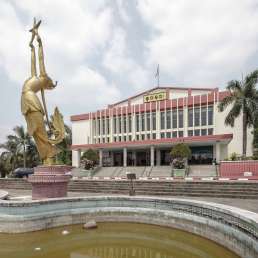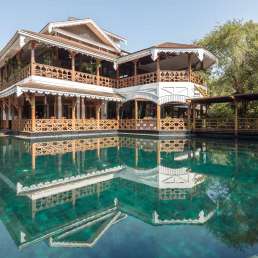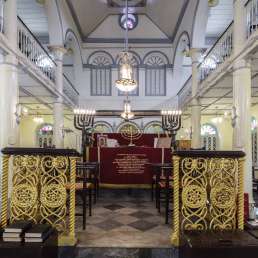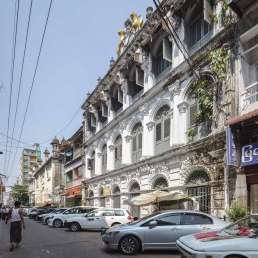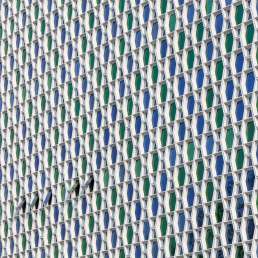Formerly: Chartered Bank of India, Australia and China
Address: 27–41 Pansodan Street
Year built: 1939–1941
Architect: G Douglas Smart (Palmer & Turner)
This was one of the last edifices built during colonial rule and was originally the headquarters of the Chartered Bank of India, Australia and China, which later became part of Standard Chartered. Its cut-stone tiles used for flooring, steel frame and reinforced concrete made this the most modern building of pre-war Rangoon. Beneath the building is the city’s first underground parking garage. G Douglas Smart, who was the Rangoon partner of the regional architectural firm Palmer & Turner, had already designed the nearby Reserve Bank of India. Like other buildings on the west side of lower Pansodan Street, there used to be a portico at the entrance beneath the pagoda-shaped hexagonal tower. All that remains is a cut-back roof over the steps to the entrance, decorated with potted plants. It is painted in baby blue and white, the typical colours of the current occupant, Myanma Economic Bank (MEB). Long vertical slits in the corner towers contain slim windows. The stylised Greek ornamentation and columns create an Art Deco impression that is rare for Yangon. Try to take a peek behind the main entrance door, where a decorative metal gate references a spider web.
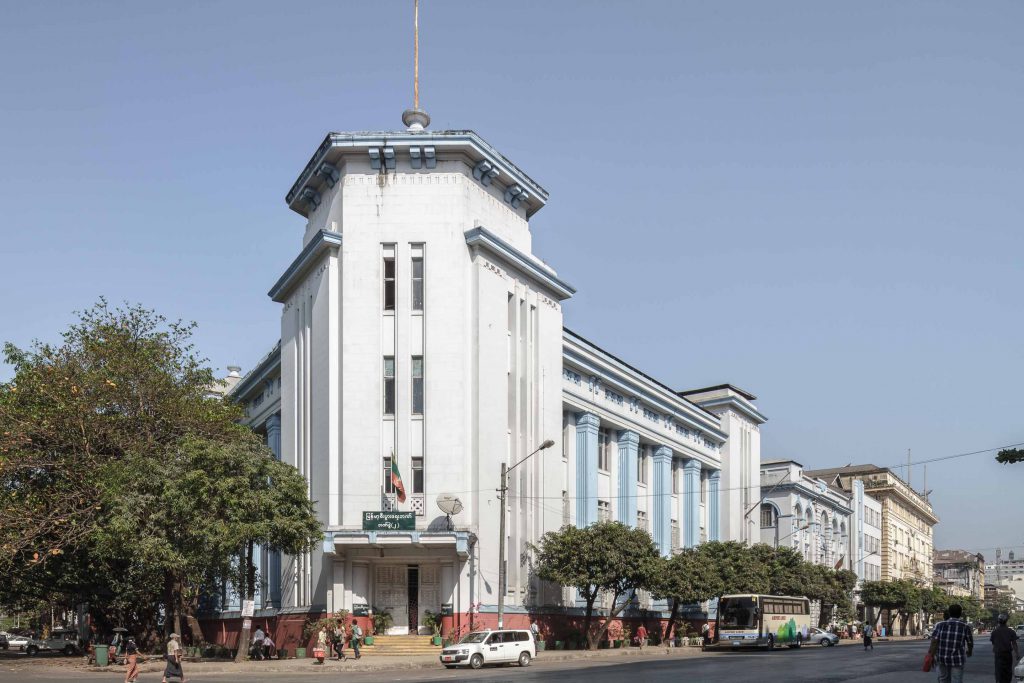
The Chartered Bank arrived in Burma around 1860. Founded in London only a few years before by shipping merchants involved in the trade between Britain and its colonies, it focused on foreign exchange transactions and credit. These devices underpinned long-distance trade back then, as they do today. The bank also engaged in direct agricultural financing. While other institutions relied on middlemen like the Chettiar community, Chartered Bank lent against the security of stored commodities such as rice, sesame and groundnuts. This was innovative at the time and remains a key aspect of agricultural reform programmes around the world today. Bank staff held the only keys to the warehouses. They also employed their own security guards.
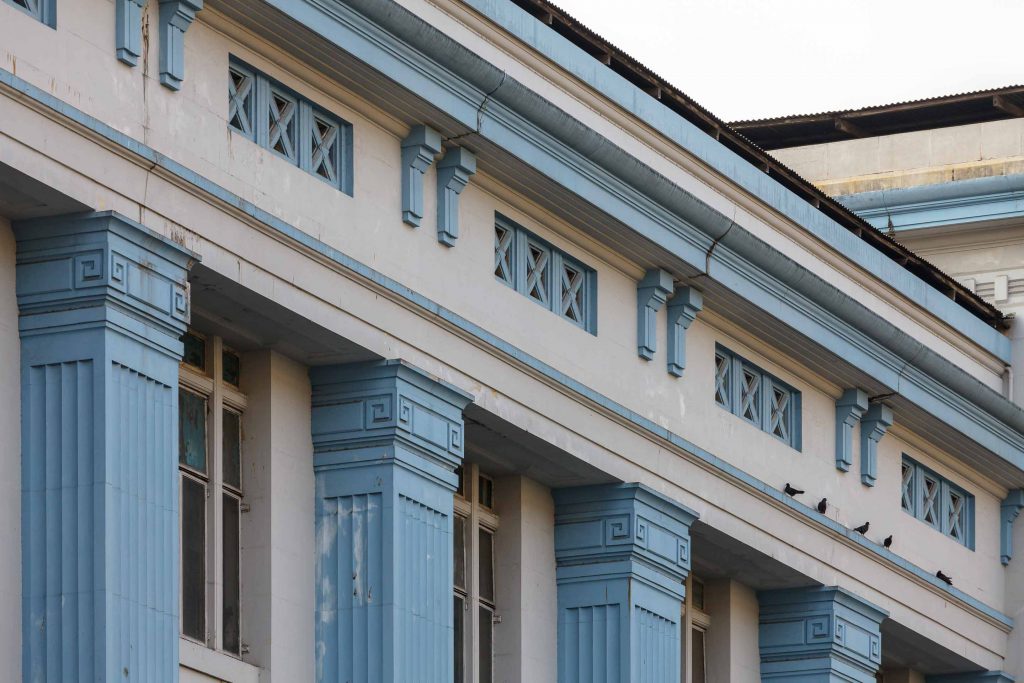
The building was abandoned before Japanese troops entered Rangoon. For a short period it served as the local branch of the Yokohama Specie Bank. After independence, Chartered Bank continued to operate in Myanmar. But like most other foreign banks, it scaled back its operations until it was nationalised in 1963.
Some of the offices in the building were rented out. For example, the United States Information Service (USIS) Library occupied the ground floor. Some time after Ne Win’s coup, the research department of the Burma Socialist Programme Party (BSPP) took over the premises. During this time, the underground car park was used as a guarded storage for bank notes in transit from the currency presses in Warzi, in central Myanmar. After the BSPP’s disbandment in 1988, the building reverted back to the Ministry of Finance and Revenue. It later became a branch of the state-owned Myanma Economic Bank.
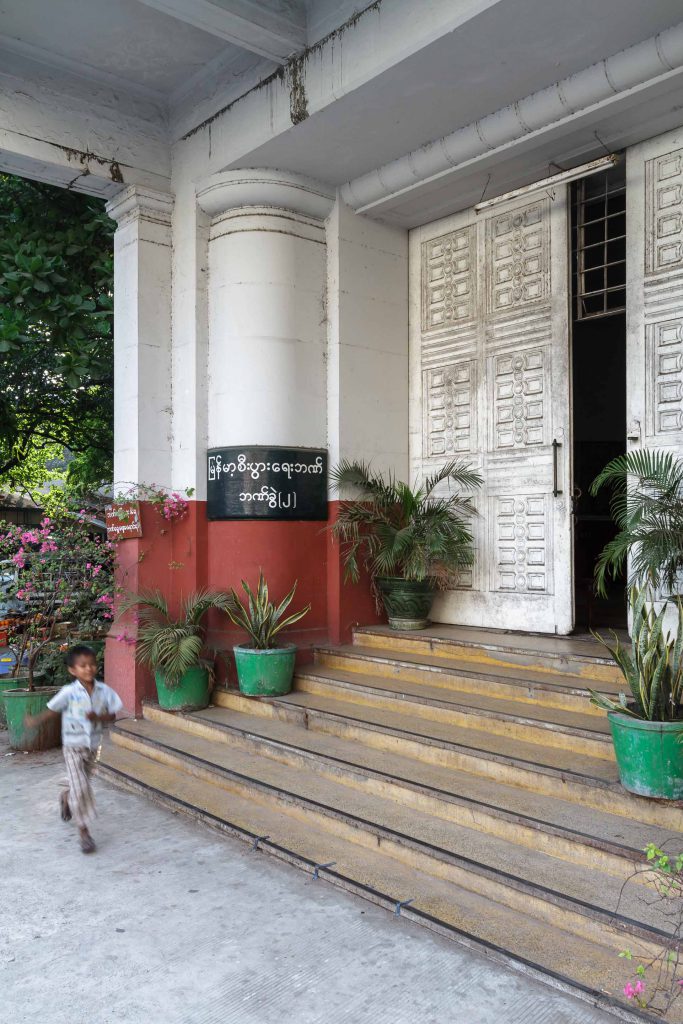
Foreign banks are planning their return to Myanmar. Standard Chartered is thought to be interested in purchasing the historic building. For now though, they have relatively few Yangon-based staff working in nearby Centrepoint Towers. To the surprise of observers, the bank did not apply for a limited banking licence in 2014, casting doubt over its plans for long-term engagement in the country.
